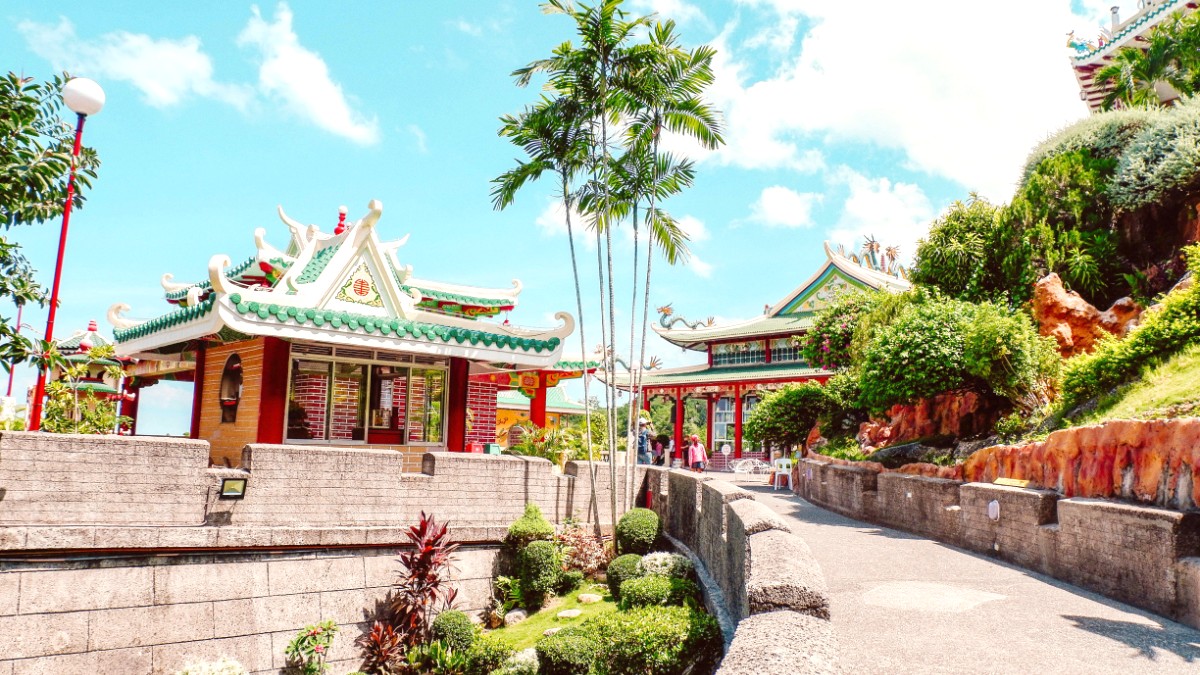
The Visayas, Philippines
Cebu maintains relatively stable warm temperatures, typically ranging from 24°C to 32°C (75°F to 90°F) across all months. Humidity remains consistently high, often above 70%, which makes the air feel warmer.
The dry season spans December to May, with less rainfall and somewhat lower humidity. February to April often rank as the driest and hottest months, bringing clear skies and strong sunshine, ideal for beach activities and island exploration.
Cebu lies within a typhoon belt, susceptible to tropical depressions and typhoons from June to November. While direct hits on Cebu Island are less frequent, strong winds and heavy rainfall can occur.
These conditions cause flight and ferry disruptions, and sometimes localized flooding. Monitor local weather forecasts. Extreme high temperatures are rare, but the heat index can feel substantial, especially from March to May.
December to February; Holy Week/Easter
Cooler, drier weather. Excellent conditions for outdoor activities, beaches, island hopping.
Higher prices for flights/accommodations. Crowded attractions. Booking in advance suggested.
March to May; October to November
Generally favorable weather, fewer crowds. Better deals on flights and hotels.
March-May can be intensely hot/humid. October-November is transition into wet season with increasing rain chances.
June to September
Lowest prices for flights/accommodation. Fewer tourists for a relaxed experience. Lush, green landscapes.
Higher rain probability and typhoon risk. Flight/ferry delays. Outdoor plans might face disruptions.
Plan beach and island hopping for the dry season (December to May) when sunny skies and calm seas present the best conditions. Diving and snorkeling are possible year-round, but best visibility usually occurs during this dry period.
For canyoneering at Kawasan Falls, December to May provides safer conditions, as heavy rain can make canyons dangerous. Tour operators may suspend activities during intense downpours. For festivals, January is the time for the Sinulog Festival.
Ideal for beaches, island hopping, diving, canyoneering.
Reduced tourist numbers, lush landscapes.
Hottest months, remember Sun protection.
Sinulog Festival, lively but crowded.
Monitor forecasts, potential disruptions.
Navigating entry information for the Philippines presents a straightforward process for many nationalities. Check the specific information for your country of origin well before your trip.
The Philippines grants visa-free entry to citizens of many countries for tourism, typically for up to 30 days. This applies to numerous nations including the United States, Canada, Australia, the United Kingdom, most EU Member States, Japan, South Korea, Singapore, and Malaysia.
For other nationalities, a visa may be a requirement in advance. The application process usually involves submitting an application form, photos, and supporting documents (flight itinerary, hotel bookings, or invitation letter).
Prices in Cebu present a wide range, accommodating various travel styles from budget-conscious backpackers to luxury seekers.
The official currency is the Philippine Peso (PHP), symbol ₱. Banknotes range from ₱20 to ₱1000, coins from ₱1 to ₱10.
Exchange major foreign currencies (USD, EUR, GBP) at banks, authorized money changers, and at Mactan-Cebu International Airport. Rates tend to be more competitive in city centers.
Daily costs: ₱1,500 - ₱2,500 (approx. $25 - $45 USD). Focus on hostels, street food, and public transport.
Hostel dorm: ₱500-₱1000. Meals: ₱300-₱600 (street food).
Limited comforts, can be crowded.
Daily costs: ₱3,000 - ₱6,000 (approx. $50 - $110 USD). Mid-range hotels, casual restaurants, taxis/Grab.
Hotel room: ₱1,500-₱3,000. Meals: ₱700-₱1,200.
Attractions and paid activities add to costs.
Daily costs: ₱7,000+ (approx. $125+ USD). High-end resorts, fine dining, private transfers.
Resort: ₱4,000+. Meals: ₱1,500+.
Specialized experiences will raise overall costs.
| Category | Item | Price Range (PHP) |
|---|---|---|
| Accommodation | Hostel Dorm Bed | ₱500 - ₱1,000 |
| Accommodation | Mid-range Hotel/Resort | ₱1,800 - ₱4,000 |
| Meals | Street food/Local eatery | ₱80 - ₱200 |
Ensure current MMR, Tdap, Varicella, Polio, and annual flu shot.
Highly recommended for all travelers.
Consider based on itinerary and contact with animals/rural areas.
Consult a medical professional or travel clinic 4-6 weeks before departure.
Tap water is generally not safe for direct consumption. Stick to bottled water. Purified water is commonly available at hotels, restaurants, and water refilling stations. Consider carrying a Portable water filter or purification tablets for refilling your reusable bottle.
Choose restaurants and food stalls that appear clean and busy. Ensure food is cooked thoroughly and served hot. Avoid raw or undercooked meats/seafood from questionable sources. Be cautious with salads or unpeeled fruits unless prepared hygienically.
Always practice good hand hygiene, especially before eating.
Drink only bottled or purified water. Carry Anti-diarrhea medication (e.g., Loperamide) and ORS.
Use Insect repellent containing DEET, wear long sleeves/pants, especially at dawn/dusk.
Use High SPF sunscreen, wear a Wide-brimmed hat and Sunglasses. Stay hydrated and seek shade during peak sun hours.
Cebu is generally safe for tourists, but petty crime (pickpocketing, bag snatching) occurs in crowded areas. Practice normal precautions.
Keep a list of emergency numbers and contacts accessible. A comprehensive travel insurance policy is highly recommended.
General Emergency/Police/Ambulance: 911. Fire: 160 or 911.
Cebu City offers reputable hospitals with modern facilities and English-speaking staff (Cebu Doctors', Chong Hua, Perpetual Succour).
Ensure coverage for medical emergencies, evacuation, trip cancellation, and lost luggage. Confirm adventure activity coverage.